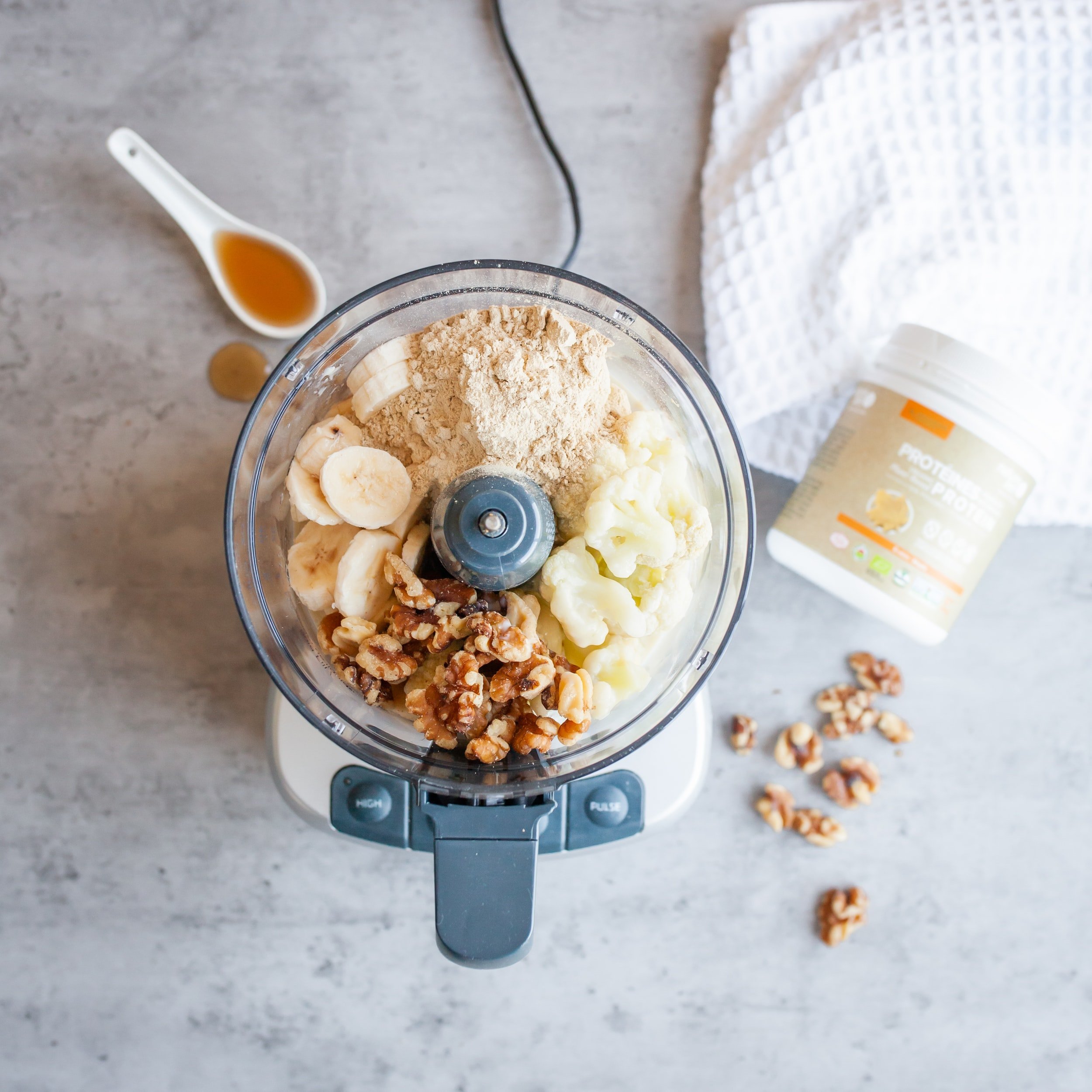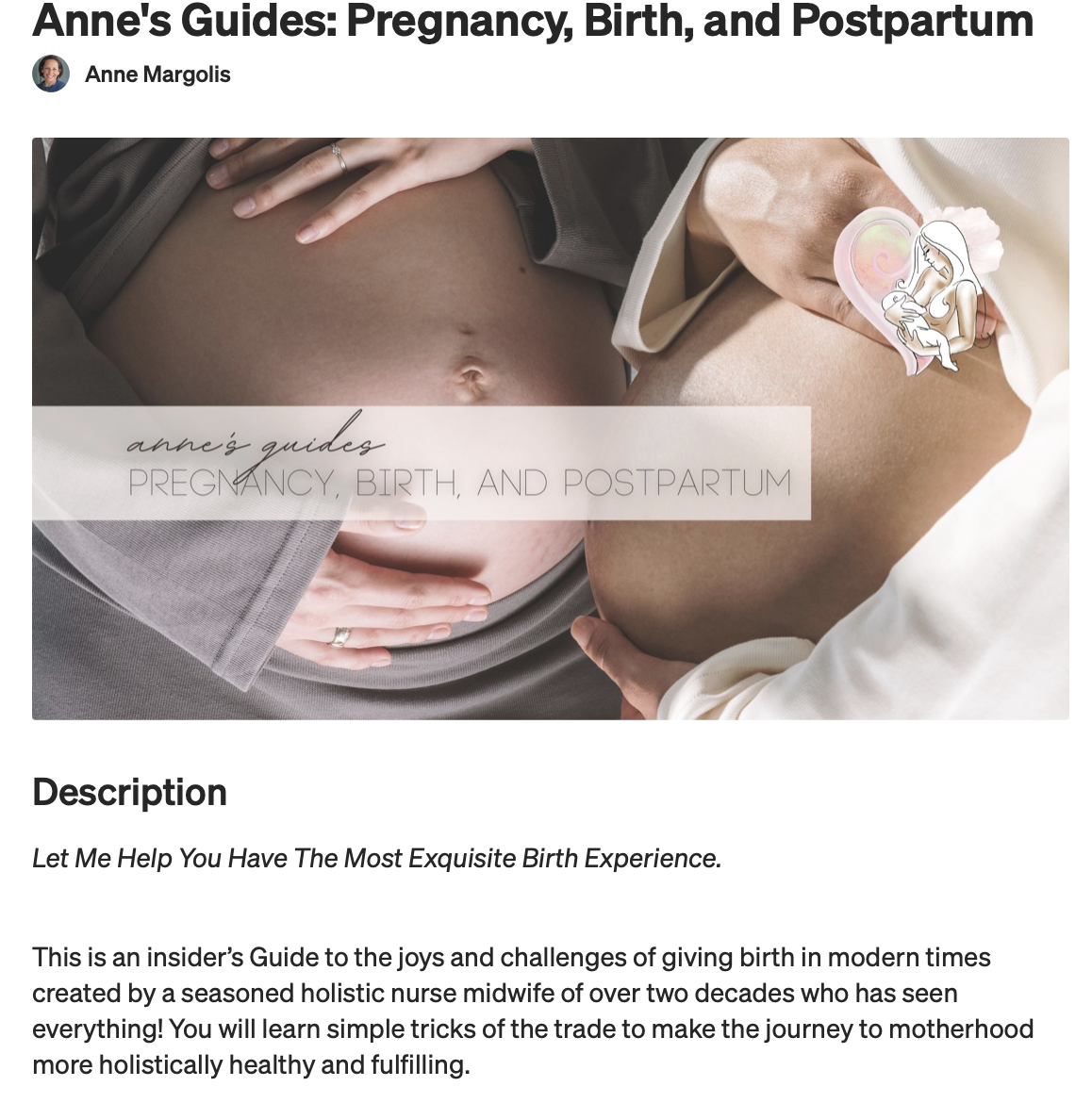High Blood Pressure in Pregnancy: How to Prevent and Treat Naturally
About 6-10% of pregnant women develop consistently high blood pressure. Typically if mild, by itself it’s usually harmless. But, if not monitored or controlled, it can be dangerous, and it may lead to a more serious condition known as pre-eclampsia, which poses a threat to the health of you and your baby.
Always remember that blood pressure varies widely in healthy individuals and is normally sensitive to moment-to-moment changes in activity, posture, nutritional status and emotional factors. It can even be a response to a fear of high blood pressure or being diagnosed with a complication! It is the steady and consistent increase that is concerning.
To Prevent High Blood Pressure In Pregnancy
Regular aerobic exercise involving moderate exertion throughout pregnancy is one of the best ways to maintain health and prevent high blood pressure. Some good options are brisk walking, dancing and swimming. If you are a beginner, build up gradually to the ideal goal of at least 30 minutes 5 times per week. Gentle forms of meditative movement like Tai Chi, Qi Gong, and yoga (especially Yin, gentle, prenatal and restorative) also help maintain normal blood pressure. Below are more tips for preventing high blood pressure during pregnancy.
Avoid stimulants such as spicy or peppery foods (including foods with large amounts of nutmeg, mustard or ginger), caffeinated products, nicotine products, cocaine, diet pills, and other stimulant herbs and medications.
Avoid excessive weight gain. Eat a highly nutritious, high fiber and protein diet to prevent hypertensive disease and to avoid excess weight gain. Avoid foods that are highly processed and refined or laden with sugars, white flour and unhealthy refined vegetable oils and partially hydrogenated fat. Replace with lots of fresh organic fruits and vegetables, whole grains, and at least 80 grams of protein. Healthy protein options include:
Fish tested free of pollutants or from non-polluted waters, like wild Alaskan salmon
Tempeh, tofu, beans and seed products
Lots of nuts, nut milk and nut butters
Limited animal protein in turkey, chicken, beef, lamb, and wild game, fresh organic raw dairy, ideally goat or sheep, and whole organic eggs
Protein powders
Take your prenatal supplements so you get the nourishment you need for your pregnancy, that is not supplied by diet alone. Especially important are an excellent whole food prenatal vitamin and omega three essential fatty acids.. Be sure to include foods high in Calcium, like raw or cooked greens except spinach, sesame seeds/tahini, salmon and sardines, and dairy. You may need additional Calcium so you get 1200 -1500 mg of Calcium daily.
Substitute vegetable oils with healthy fats like organic cold expeller pressed extra virgin olive in your cooking. You can salt your food according to taste (a dash of Himalayian sea salt or tamari is best), but avoid excess and processed foods high in sodium.
Drink at least 64 ounces of fluids each day between meals, at least 20-30 minutes before or 2 hours after eating. Opt for filtered, spring or well water, herbal tea, soup broth, or whole juiced veggies.
Add 1-2 Tbsp of powdered Spirulina to your daily smoothie or take as directed in capsule form.
Drink strong Nettle, Red Raspberry and Dandelion teas regularly, as well as decaffeinated green tea. When feeling stressed, drink some strong calming Chamomile, Lemon Balm, Lavender , Passionflower, or Skullcap tea. Add honey, fresh mint, juice of fresh lemon or lime to taste.
Cut down on the stress in your life. This is easier said than done, but this is an important time to be clear about your priorities. If you feel very stressed and pressured and your blood pressure is on the rise, your body is sending you early warning signals to rearrange your schedule and increase your rest periods in order to protect the health of you and your growing baby. Don’t be afraid to ask family and friends to help with chores or child care. Even better, treat yourself to hired help. And be sure to rest on your side three times a day for 30-60 minutes.
Especially learn to master your reaction to outside stress and relax yourself from the inside, which relaxes your blood vessels and lowers blood pressure. Reduce inner tension and increase feelings of centeredness and calm by focusing all your attention on your breath, simply watching all sensations as you inhale and exhale. Also try regular conscious slow deep breathing and a regular breathwork practice, meditation, and/or progressive muscle relaxation techniques (yoga nidra) for a few minutes several times per day, and certainly before coming to your prenatal appointment to have your blood pressure checked. There are many phone apps like Calm and Breathe to help you establish a regular practice.
Before rising in the morning and going to bed at night, while waiting, in transit, and whenever you feel triggered or stressed, practice the any of the following calming breathing exercises:
3-Part Breathing
Exhale slowly through your mouth with an audible sigh while consciously releasing any and all muscle tension.
Imaging a pump expanding your abdomen and lower back as you breathe down deep into your belly.
Allow ribs to expand with air, then inhale air into your upper chest towards your collarbone and shoulders
Inhale in this way for a count of 4.
Hold for a count of 4 while staying relaxed.
Exhale slowly through your mouth for a count of 4, releasing in the same order as the inhale, collapsing/returning to baseline, your abdomen, ribs, then upper chest. This is the ideal form of breathing, as opposed to rapid shallow breathing. With each exhale, let go and relax more.
Repeat this cycle a total of 8 times or for at least a few minutes.
Once you get the hang of it, play with various types of breathing. Try several minutes of inhaling and exhaling, each to a count of 3, 4, 5 or 6 without the hold, keeping it smooth and even. Then double the length of exhalation. For example, so if you inhale to a count of 3, then exhale to a count of 6.
Box Breathing
To try box breathing, inhale to a count of 3, hold for a count of 6, exhale for a count of 6, hold for a count of 3. Repeat for several minutes. You can also play with ratios, for example:
Exhale slowly through your mouth with an audible sigh, while relaxing all muscle tension.
Inhale slowly through your nose for a count of 4.
Hold for a count of 7 .
Exhale slowly through your mouth for a count of 8, releasing and letting go more each time.
Repeat this for a total of 8 cycles.
Forced Exhalation
Another great breathwork technique that disengages your conscious attention from thought and relaxes the nervous system is forced exhalation. To do this, after a normal breath try squeezing as much air out as possible using your intercostal muscles in your chest. Then, allow your breath to come in naturally and deeply, but automatically. Repeat the cycle for at least several minutes or as long as you would like.
These breathwork techniques are simple to do, health enhancing, totally safe, and without side effects. They are all natural tranquilizers, especially if you do it often. If you need more personal guidance, schedule a session with me.
Life is stressful and always has been, and eliminating all outside stress is not an option. But, you can learn to activate your own relaxation response and quiet your nervous system. Not only with breath awareness, breathwork and relaxation techniques, but also by making a conscious effort to be aware of anxiety-provoking, tension-causing thought patterns that are not serving you. Try to stop them or shift your attention to something more positive and ultimately change your mental state. You have the capability to change your attitude and reaction to your life experiences to more health enhancing responses. For example, you can surrender to and totally accept unpleasant events over which you have no power. You can view them as a wake-up call, an opportunity for personal growth and redirection. Try to focus as much of your attention as possible on the present moment, literally without letting your thoughts wander into the past or imagined future.
For more information about this and other great ways to improve your physical and mental health and well being, read Natural Health, Natural Medicine by Dr. Andrew Weil, Practicing the Power of Now by Eckhart Tolle, and Prescriptions for Living by Bernie Siegel.
Avoid things and people that agitate your mind and raise your internal tension. Surround yourself as much as possible with calm centered people, things, sounds and places that inspire, relax and restore you to inner peace and safety. For many, this means being around nature or beautiful art and soothing music.
Make a conscious effort to work on increasing your own feelings of forgiveness, appreciation, love, joy, optimism, and healing, while letting go of anger, resentment, envy, fear, sadness, and negativity. Do not be afraid to seek counseling if you need help with this.
Do more of what you love, and figure out how to make chores more fun (like doing them while dancing to music or with a friend).
Natural Remedies for High Blood Pressure in Pregnancy
Once you have been diagnosed as having pregnancy induced hypertension (PIH), you will get lots of extra attention in the interest of monitoring how mild or serious your condition is and to protect the health of you and your baby. You will be asked to go to your provider’s office more frequently to check your blood pressure and the baby’s heartbeat, as well as to check for excess swelling, protein in the urine and labs that signal developing complications like preeclampsia.
Periodically take your blood pressure in your own home when you feel relaxed and secure. You can buy an easy to use digital blood pressure monitor. Sometimes, there is an artificial elevation in blood pressure in the office due to anxiety about being examined and having your blood pressure reading be too high.
Continue to use the preventative suggestions, but increase the amount of time you are resting on your side to as much as possible. Depending on your individual situation, you may need to maintain strict bed rest on your side all day – this means no housework or errands – but often this is not necessary.
Increase the frequency and duration of your breathing and relaxation exercises. Visualize your blood vessels dilating for 5 minutes several times daily, while thinking that your blood pressure is now normal.
Watch comedy. Laughter is extremely healing, reducing internal stress reflected in lower blood pressure.
Be in tune with your baby’s movements. Make sure you count at least 10 moves in 1 hour during the times your baby is most active, which is usually after you eat and when resting.
Take biofeedback training to lower your blood pressure.
Take several warm baths daily with Epsom salts and a few sprinkled drops of the essential oil of Lavender.
TIME TO CONSIDER SUPPLEMENTATION
Reputable brands of the supplements and herbs I recommend include Innate Response, Wish Garden, Gaia, Herb Pharm, Wise Woman Herbals, Pure Encapsulations and Eclectic Institute, or any of those in my online holistic apothecary.
Again, if you aren’t already taking a natural prenatal vitamin and mineral supplement, now is the time to start. Also consider additional calcium and magnesium. Take 500 mg of each in the morning, afternoon and at bedtime. If you experience loose stools, you can experiment with skipping the magnesium dose in the morning.
Eat more potassium-rich foods found in most fresh fruits and vegetables, for example starchy roots, potatoes, dark leafy greens, bananas, oranges and cream of tartar. And daily take 1000-2000 mg vitamin C up until 36 weeks gestation, then reduce to 500 mg. Also take 400 IU vitamin E and 2-3 mg methyl folate to boost your antioxidants.
Make sure to take at least 300-400 mg DHA/EPA Omega 3 essential fatty acids found in fish oil twice daily. You can take a vegetarian source, but they aren’t as ideal. However, some benefit can be derived from eating 2 Tbsp ground flax seed every day. You can add it to your cereal, salad, baked goods or yogurt. Alternatives are 1000 mg of flaxseed oil taken in capsule form or using 1 Tbsp of uncooked flax oil in your salad or other cold foods twice daily, 500 mg black currant or evening primrose oil each day.
Eat a bulb of fresh garlic daily. You can make it delicious by roasting or sautéing the whole cloves in olive oil, salt, pepper and a dash of parsley. If you prefer raw garlic, eat 2-4 cloves twice daily crushed into your salad or cut and swallow as a pill with a spoon of honey and a glass of water or citrus juice, which minimizes garlic breath and stomach upset. Another option is to take New Chapter’s Garlicforce 2-8 capsules daily. Infuse your olive oil with garlic, by soaking all cloves from a bulb in 1 cup of olive oil for a few days for delicious and health enhancing meals, used on salads, veggies, beans, sprouted whole grain breads and pastas.
Eat more onions, parsley, fresh beet juice, cucumber and its juice, watermelon and turmeric. Renowned herbalist Susan Weed advises drinking a mixture of the juice of ½ lemon or lime with 2 tsps cream of tartar and ½ cup water once daily for three days.
Prepare your own herbal infusion:
Steep up to 1 large handful of dried nettle leaf and/or red raspberry leaf, and dandelion root in a quart of boiling water for at least 4 hours.
Strain in a glass mason jar, and drink several times throughout the day.
You can add a splash of lemon or lime juice, fresh mint, or a dash of honey to taste.
Drink 2 cups daily.
Take 1-2 dropperfuls of tinctures of passionflower, skullcap, and lavender 1-3 times per day, especially if your increased blood pressure is due to stress and anxiety. Alternately, passionflower capsules can be taken as directed, 2 twice daily.
Drink Hops tea before bed during the last few months of pregnancy.
If you are interested in more healing herbs specific to your situation, you can take Dandelion (a natural diuretic) and Hawthorn berry (a natural vasodilator). The herbs should ideally be supercritical or encapsulated freeze dried extracts. Take 1-2 capsules of each 2-4 times per day or 1 dropperful of each liquid tincture of Dandelion and Hawthorn Berry 2-3 times per day.
Herbalist, midwife and physician Dr. Aviva Romm in The Natural Pregnancy Book recommends adding equal parts Cramp Bark, Black Cohosh, and Motherwort after the first trimester, as they relax the nerves and muscles, and dilate the peripheral blood vessels, thereby reducing high blood pressure. Take a dropperful of each tincture up to a few times daily as needed, depending on your blood pressure. But stop if you feel a pattern of preterm contractions (4 per hour or every ten minutes before 37 weeks). She also advises mixing together the following herbal tonic tinctures to support the liver and kidneys, especially to prevent worsening preeclampsia, and taking 1 tsp of the mixture 1-2 times daily:
3 tsp each nettle leaf, schisandra, American ginseng, dandelion root, burdock root
1 ½ tsp each passionflower and linden
For those with any sort of chronic high blood pressure in which serious causes have been ruled out and none of the natural and allopathic remedies help, consider reading the book The Mindbody Prescription By Dr John Sarno, MD. He is an amazing pioneering physician whose brilliant approach has helped hundreds of thousands of people without drugs, physical measure or surgery, and using breathwork, to release stress and past trauma energy while transforming health in a deeper way. Also check out Brandon Bays’ book The Journey, and her website for intensive workshops that are extremely effective mindbody cutting edge methods that have also lead to transformational healing for thousands of people around the world.
If you need more personal guidance, schedule a consultation with me.
Call your provider immediately if you have any of the following symptoms: sudden severe swelling of your feet, legs, hands or face, a severe headache or pain in your upper abdomen or uterus, spots in front of your eyes or blurry vision, dizziness or light-headedness, vaginal bleeding, a sense that your baby is moving less than usual, regular contractions, or your water breaks.
I’ve taken everything I’ve learned from over 27 years in my private practice and I’ve poured all of my love, passion, knowledge, and experience into creating something truly special for you… my new Pregnancy, Birth & Postpartum Guides. My transfer rate from home to hospital is 7% which means 93% of mamas are having beautiful natural homebirths, and I have not once had to transfer a mama for an epidural because she could not handle the sensations of normal labor. Not once. A huge part of that is how I help them prepare. I want that for you!
As they say, knowledge is power, and my Guides/courses can be a great way to understand the pregnancy, birth and postpartum process, clear up any confusion and trepidation, find your confidence, inner calm and strength, bust through fears and misconceptions, get expert guidance on everything you need to know, learn coping tools and mindset shifts to last a lifetime, as well as boost your health and well-being, and absolutely love your experience no matter how challenging.
Whether you’re an experienced or new parent, there are over 24 hours of videos, workbooks, and PDFs to answer all of your questions. Everything in my Guide is searchable; so you can just type or talk and it’ll bring you right to the exact moment in the video where I answer your question. Try it! Say "Labor Positions" and it'll bring you right to the moment I start talking about positions ideal for labor. It’ll blow your mind!
The key to a positive birth is feeling confident, strong, relaxed, and empowered during the entire process, regardless of the twists and turns it may take. I give my full heart and all I know in everything I do to support Moms like you!
have created THREE Guides with hours of searchable videos, workbooks and pdfs to lead you to the birth of your dreams! They are easy to use, mobile friendly, and transliterated and translated in Spanish, French, and any language you need! AND THAT IS HUGE! TAKE ADVANTAGE NOW, AND YOU HAVE LIFETIME ACCESS.
These are an insider’s Guide to the joys and challenges of giving birth in modern times created by a seasoned holistic nurse midwife who has seen everything! Learn simple tricks of the trade to make the journey to motherhood more holistically healthy and fulfilling.
You will have direct access to me through the Guides and I can help you:
Plan a pregnancy and discuss preconception and pregnancy holistic health
Get the support and guidance you need to answer all of your questions to create a birth experience you love and treasure forever
Understand holistic modalities on woman's health issues
Get the support and tools you need for stress reduction
Answer questions and make informed decisions
BUY NOW!
Give yourself this gift a lifetime to have the experience of your dreams, you will treasure forever.























